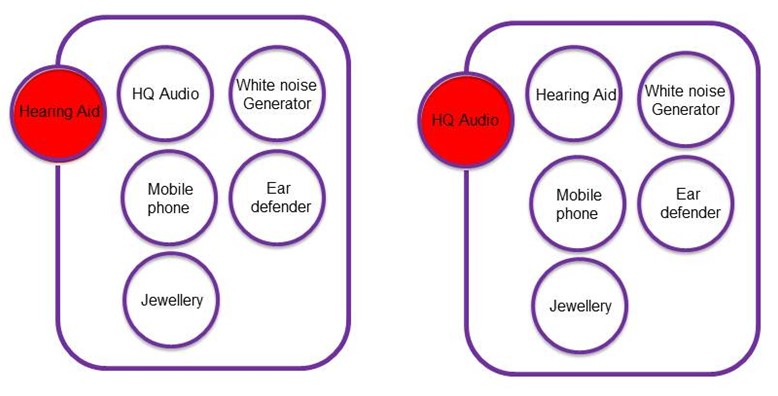A frame is a psychological device that presents a predetermined perspective or viewpoint to influence decision-making. People will give priority to avoiding a perceived loss above any gain.
Industrial designers can manipulate or bias the perception of a product or service through highlighting visual elements. The use of foreground background differentiation within perception and contrast to highlight the desired elements are just two ways in which this may be done.
This may also be achieved through emphasising the attributes of a product’s function or aligning the cultural coding (branding) with the aspirations of the viewer.
Barnes (2011) has highlighted what appears to be endemic discrimination within UK society towards those considered disabled. From the definition of ID given earlier, it is clear Industrial Designers have the skills and knowledge to help change attitudes and behaviours in relation to AT products, leading to a change in UK society’s perception of impairment and disability. The table highlights the issues raised by Barnes. The Barnes list has been matched with a list of ways in which ID practitioners may overcome these challenges to effect social change.

Systemic and endemic discrimination
- social discrimination (despite the Equality Act, 2010, UK)
- Medical model and treatment reinforces segregation
- Doctrine of human adaptability and fixed environment
- Social model (late 20th Century – early 21st Century)
- Innate social behaviour: weak/ill
- Perception: disability = weakness – leading to social stigma
ID and inclusivity
- Social integration
- Change perceptions
- Manipulate psycho-social perception through colour, form, texture and sound
- Change behaviours
- Manipulate response and behaviours using social doctrines semantics, social value and association
- Education and awareness
- Role models
- Change environment
- User centred focus
Example of challenges within AT product design barriers and pathways to solutions
(Torrens 2012)
Useful links
Barnes, C., 1995. Disability rights: rhetoric and reality in the UK. Disability & Society, 10, (1). pp. 111-116.
Torrens, G.E., 2012. Assistive Technology product to Universal design: A way forward, Design For All India, 7 (7), pp.182-205 Available at: (https://dspace.lboro.ac.uk/dspace-jspui/handle/2134/15736), Accessed: [23/09/2015]
